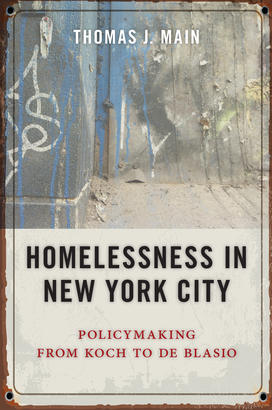Five Mayors, One Problem: Thomas Main *94 on Homelessness in New York City
Thomas Main *94
The book: In 1979, Callahan v. Carey established the Right to Shelter policy for homeless people in New York City — a dramatic break with previous practice. In his new book, Homelessness in New York City: Policymaking from Koch to de Blasio, Thomas Main *94 tracks the development and management of the shelter system in New York City through the tenure of five mayors: Ed Koch, David Dinkins, Rudy Giuliani, Michael Bloomberg, and Bill de Blasio.
The city overcame countless challenges to construct what is now the largest shelter system in the world serving more than 50,000 people at an annual cost exceeding $1 billion. Everyday challenges like dealing with mentally illness and confronting communities who did not want shelters in their neighborhoods led to larger questions about incentivizing poverty. Main tells the story — both good and bad — of what happened when New York established the right to shelter policy.
The author: Thomas Main received his Ph.D. in politics from Princeton and is associate professor at the Baruch College School of Public Affairs, City University of New York. 
Opening lines: “In the mid-1970s the problem of homelessness achieved a new visibility on the New York City scene. Literally. Prior to the early 1970s the phenomenon of homelessness … was confined mostly to Bowery, the city’s skid row neighborhood. Some classic studies of this milieu began in the early 1960s and reported that the homeless… rarely ventured outside of the Bowery on the Lower East Side of Manhattan. Increasingly throughout the seventies, however, the homeless came to be encountered across Manhattan and the city as a whole.”
Reviews: Charles Brecher of the Citizens Budget Commission says, “A well-documented and comprehensive analysis of five mayors’ efforts over more than 30 years to respond to the growing challenge of urban homelessness. Readers interested in issue of big cities and the policy process that drive politicians’ actions will learn much from this book.”












No responses yet